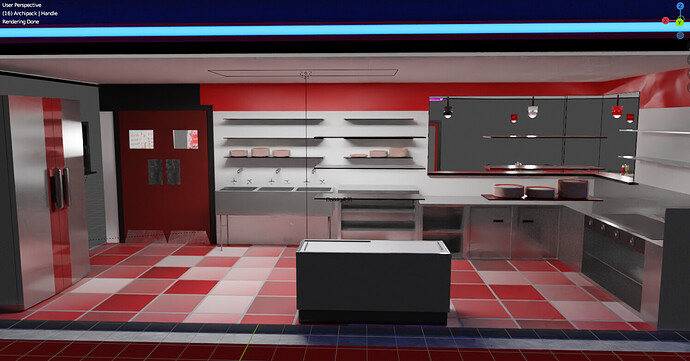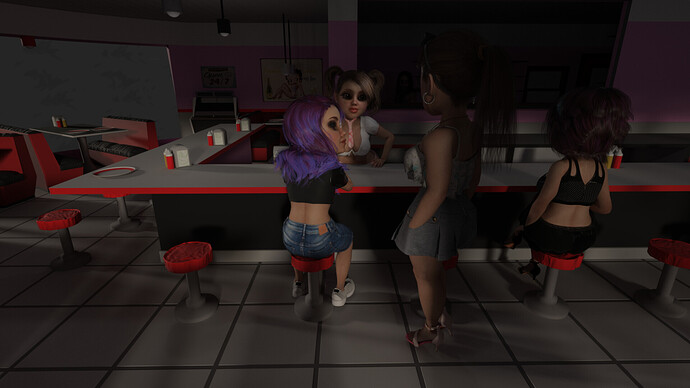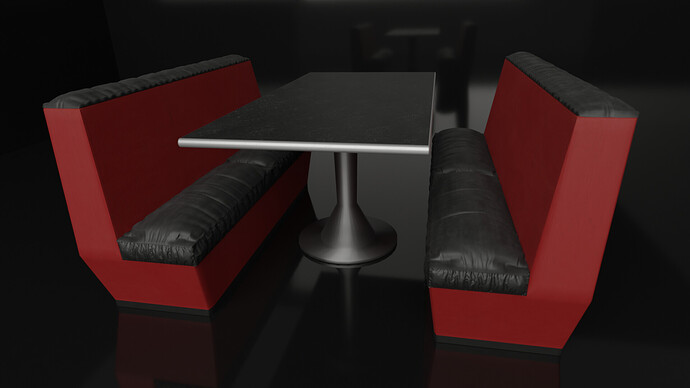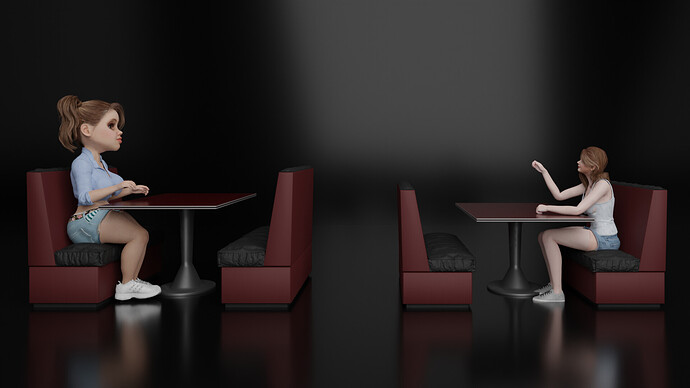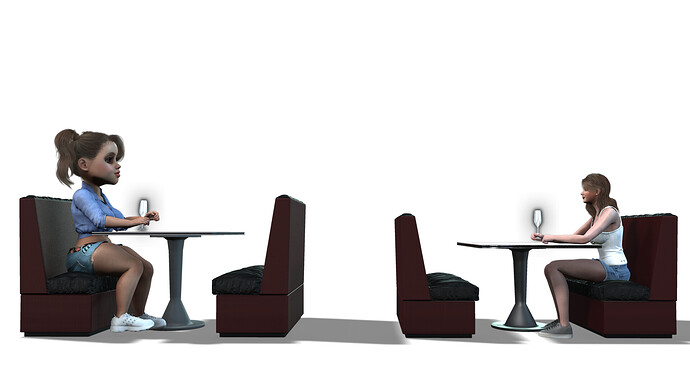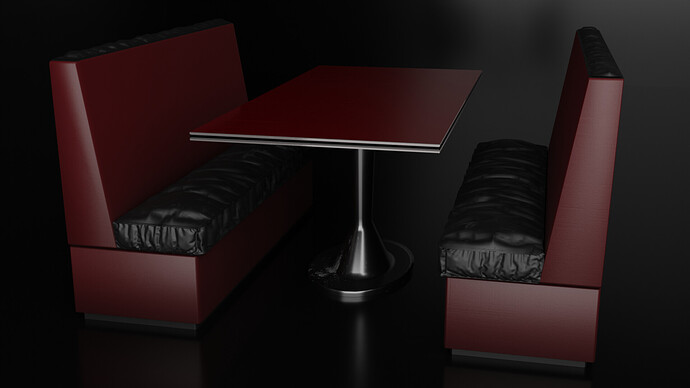Sorry for the delay in response… Been busy with work and rebuilding this booth. I was having trouble getting good texturing images. Nothing looked as good as even Evee… LOL. I was getting many errors on the mesh, edges not defined or something… anyway… stressed to the max… I decided to separate the bench into pieces and not one modified cube.
It was a lot more to image but worth the time it took. I am now getting consistent results in my renders from Cycles, Evee and in my other software, Iclone.
Cycles Render
IClone Render (interesting white background that got in there some how… LOL it’s not white in the original.)
Lighting is different, but the texturing is very similar. This was the objective.
Also… A big Thank you to the one that suggested I go back and look at my proportioning. Where they did look pretty close with either character, I do notice a drastic difference when both in the same scene. Although… camera perspective can make it work LOL.
(a quickie in action)
Thanks for the tip for getting props. If I was doing this strictly for my own project, sure, that would work fine. I started this for an idea I had for an animated short… but I am also tired of my current career and want to change. I may put this up as content for purchase. If I do that, I cannot use items from other artists without permission or consent. Rather do it all myself and have total control LOL…
Besides… Look how much better the benches look now that I have separated out the pieces, base, bottom, back and seat. The UV map came out much cleaner this way as well.
Old Version.
New Version - Cycles Render
I will check out that building generator. I am not sure how soon it will be needed, now that I will be going back in and re-scaling everything down to regular human size  Well, not really that bad, I had to go back and re-do all the texturing anyway… just ran everything through the blender shading nodes… everything still needs to be imaged and attached.
Well, not really that bad, I had to go back and re-do all the texturing anyway… just ran everything through the blender shading nodes… everything still needs to be imaged and attached. 
Today is my Friday… The next two days will be total conversion/rebuilds. Woo Hoo!!! 
Thanks for all the tips everyone… keep em coming… they are really helpful!!! 
EDIT: Oh yes… the slowness is from the mesh. The seat cushions seem to be , not sure the term, have a lot of squares… LOL. It was generated from a cloth simulator.
![]()

